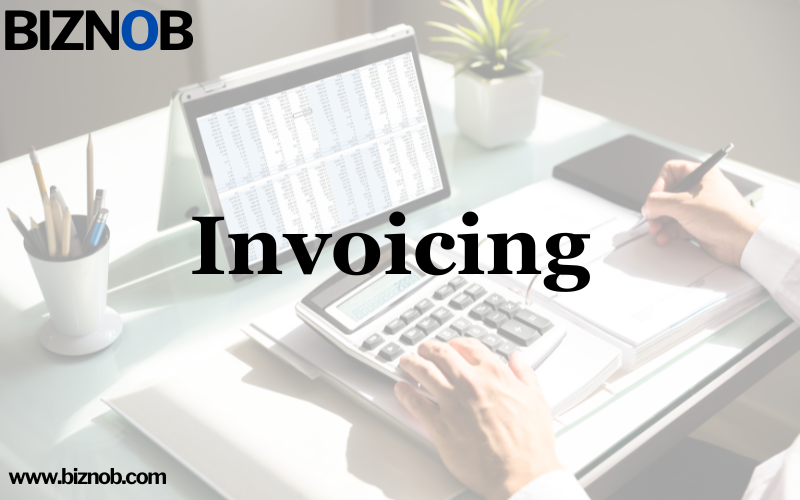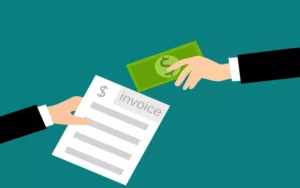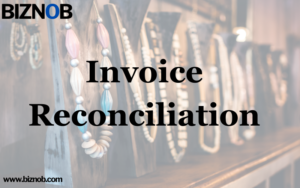What does billing mean?
A company sends an invoice to the customer when it provides goods or services. This invoice lists the goods or services and the price for each one. Invoicing is an integral part of the billing and accounts payable processes. For businesses to make money, they need to ensure that billing is done correctly and quickly.
An invoice lists the items, how many were sold, how much they cost each, the totals for all the goods or services, and any applicable taxes or shipping costs. This paper serves as proof of purchase for both parties. The customer must pay according to its terms once they accept it.
An essential part of paying is sending out invoices. It ensures that the right amount of money is paid for goods and services, that buyers get the goods or services that sellers offer, and that buyers know how and when to pay the invoice. Invoices are also legal records of transactions that are used for tax reasons.
Word for
- Billing and invoicing control
- What Invoicing Does
- Ask for Payment
The primary purpose of an invoice is to ask for payment for goods or services that have been provided. An invoice is like a ticket because it proves to the buyer that they bought something from the seller. It can also be used to keep records in case of future disagreements.
Keep records and keep track of payments.
An invoice can be sent once a customer has paid or after each service or product has been given to them. Invoices help businesses track payments and ensure customers pay on time, as agreed upon in the original contract.
A Look at Business
In addition, bills can be used to gather and analyze data. This information can help companies make better marketing and sales plans by letting them look at patterns in their customer data. This helps companies make smart choices about price, discounts, sales, and other things that can improve the quote-to-revenue process.
Protection by the law
Invoicing is a significant way for businesses to stay safe financially. Companies can keep track of the transactions they’ve had with their customers by sending them an accurate and thorough bill for the goods or services they’ve provided.
This helps ensure everyone is on the same page about what was traded, how much it cost, and how payment will be made. This protects businesses legally in case of disagreements or problems with payments. It also keeps customers from committing scams or taking advantage of the business. Invoices also leave a paper trail that can be used as proof in court cases involving contracts or other customer relationship issues.
Forms for taxes
An accounting system helps keep track of how much money people owe. When you file your taxes, you need this information to ensure that all of your income is listed and that no mistakes are made when figuring out how much you owe.
Payment Terms for Invoices: There are two types of payment terms for invoices: instant payment upon receipt (also called “prepay”) or payment over time (also called “net term”). Businesses gain from immediate payment because they get paid in full immediately after billing.
Customers must pay at least part of their amount within a certain number of days after receiving a “net term” invoice, such as “net 15,” “net 30,” or “net 90.”
Standard Parts of an Invoice
Invoices include standard information like payment terms, a list of items purchased, their prices, and how much they cost, as well as item descriptions, quantities bought, shipping costs and methods, and discounts. Invoices should also have all the necessary information for both parties: the seller’s name (business name), how to reach them, and an invoice number or reference code for keeping track of them.
Sales or value-added tax may also be added to the bill if the business is located in a particular area. The date of purchase, statement date, terms and conditions, and return policy are also essential. All of this information must be on every bill so everyone knows what was agreed upon before the goods or services were delivered.
Why automated billing is important
Automated billing is an integral part of any business’s money management. It makes it easier to bill customers and get paid, saving time and money. Automated billing also helps businesses keep accurate records, keep track of when customers pay, and better handle their cash flow. Many billing platforms offer automated invoicing features that can help businesses be more productive while cutting down on the costs of the manual work that comes with using old-fashioned paper systems.
Automated billing not only saves time but also makes companies and their customers safer because it eliminateshuman error that could cause mistakes or even fraud that ccostsa lot of money. Because of this, businesses that want to make more money and ensure their financial reports are correct need to use automatic invoicing technology.
Software for Billing: Software for billing can be bought separately or as part of a payment platform. It takes care of the bills that customers get after buying something. This program makes the process of sending invoices and getting paid by customers easier. It also helps companies track what they’ve received, what they still need to receive, and how much each customer pays.
Features of Billing Software
Some of the most common benefits of billing software are creating invoices, tracking payments, setting automatic reminders, managing customers, and figuring out taxes. When people make bills, they can change how they look and feel and set payment terms, like when the invoices are due and what payment methods are accepted.
Users can quickly see what payments have been received while keeping track of still due bills. Businesses can keep track of bills that haven’t been paid by setting up automated reminders that go off when payments are late.
A customer management tool lets you keep your essential contact information for each customer in one place so you can find it quickly. Lastly, tax calculators make it easier for companies to determine how much tax they must charge for a particular service or sale.
An invoicing system might have more features than just the ones listed above. For example, it might have built-in accounting modules, the ability to send invoices automatically, and the ability to keep track of past invoices.
Users can quickly look at past sales in the invoice history logs, and recurring billing lets them set up automatic payments with customers on specific dates throughout the year. Businesses can link their bank accounts with integrated accounting tools, making it easy to keep an eye on all their financial information in one place. Lastly, the software has built-in reporting tools that let users make different reports about their sales and financial health.
Software for sending invoices makes it easier for businesses to bill customers and keep track of their accounts. With its many features, such as creating invoices, tracking payments, calculating taxes, and including financial modules, this software can help businesses get paid faster and spend less time handling customer payments and invoices by hand.
Mistakes That Billing Software Can Help Companies Avoid
Invoicing is an integral part of keeping track of money for any business. It makes it easy for businesses to keep track of payments and handle their money.
Businesses can speed up their billing process, cut down on mistakes, and ensure that all the necessary information is included in every statement with the help of online billing software. Businesses are more likely to make these billing mistakes if they don’t have billing software:
- Forgetting to invoice
- Not sending out automatic payment reminders
- Incorrect or missing customer data
- Pricing errors or not using contracted pricing
- Unclear payment terms
- No invoice backups
- There is no standardization in invoice format or branding
- Lack of security
- The billing cycle is not synced with the customer’s payment cycle


























































